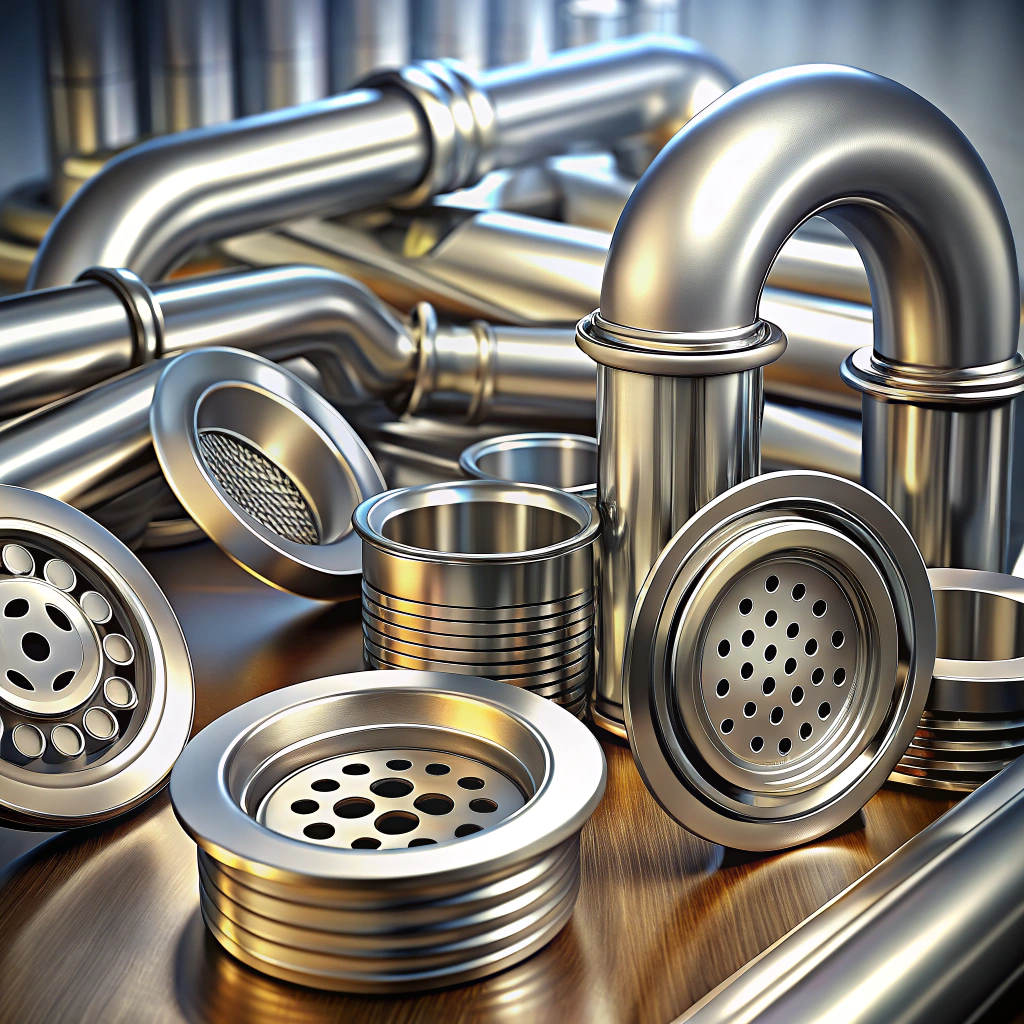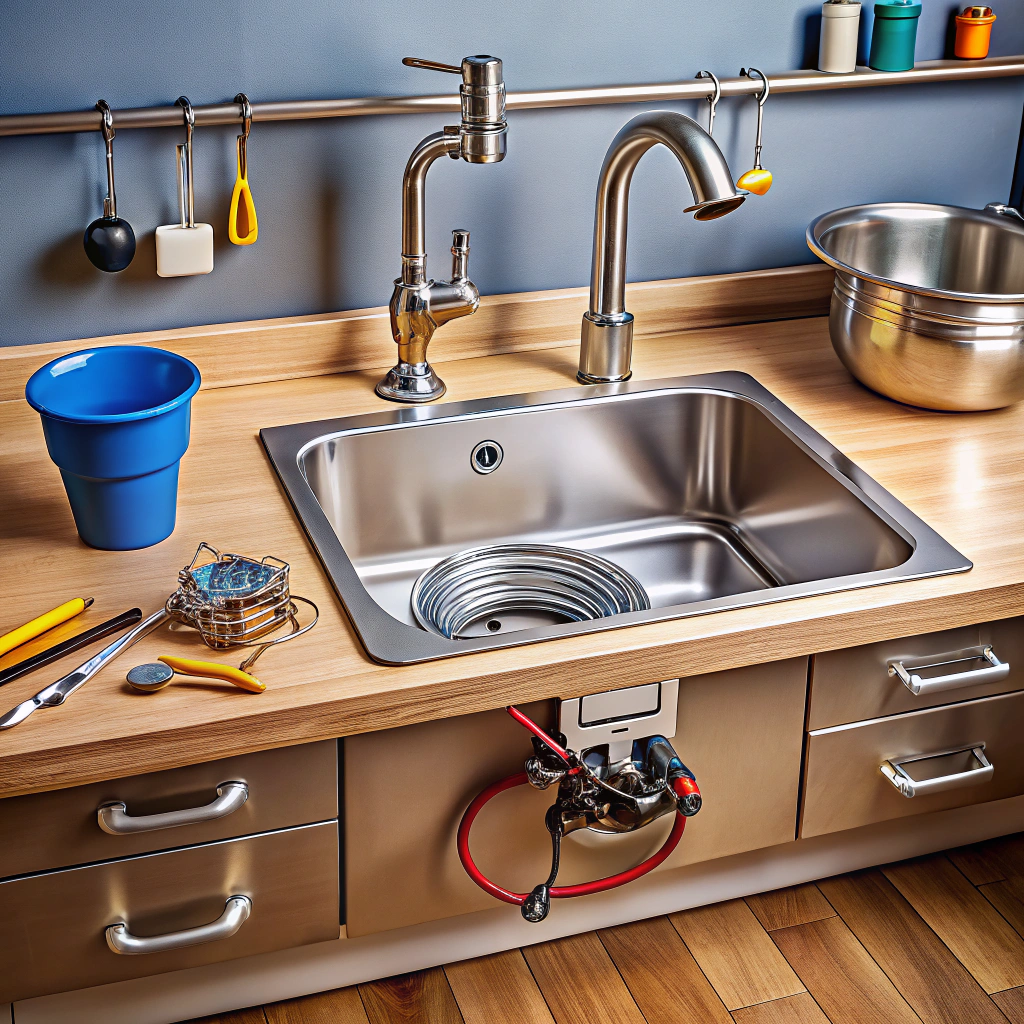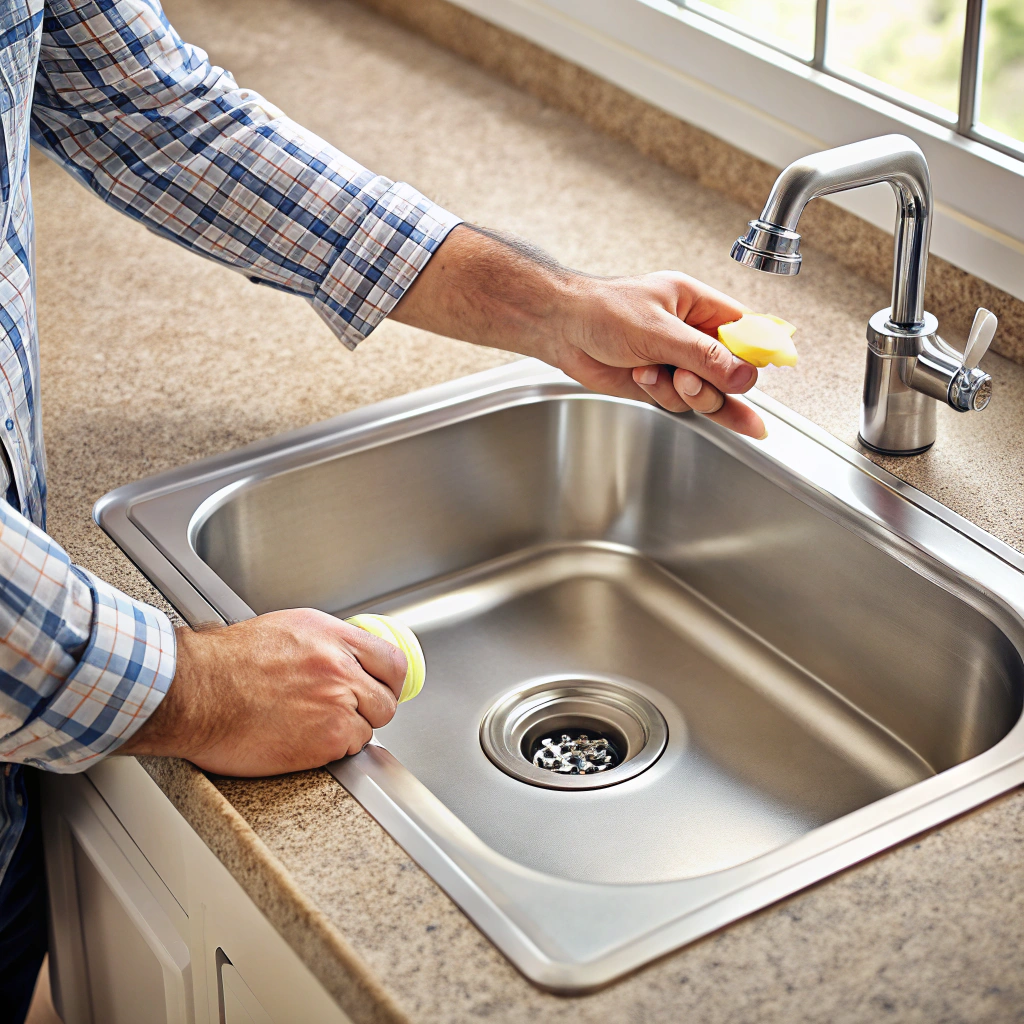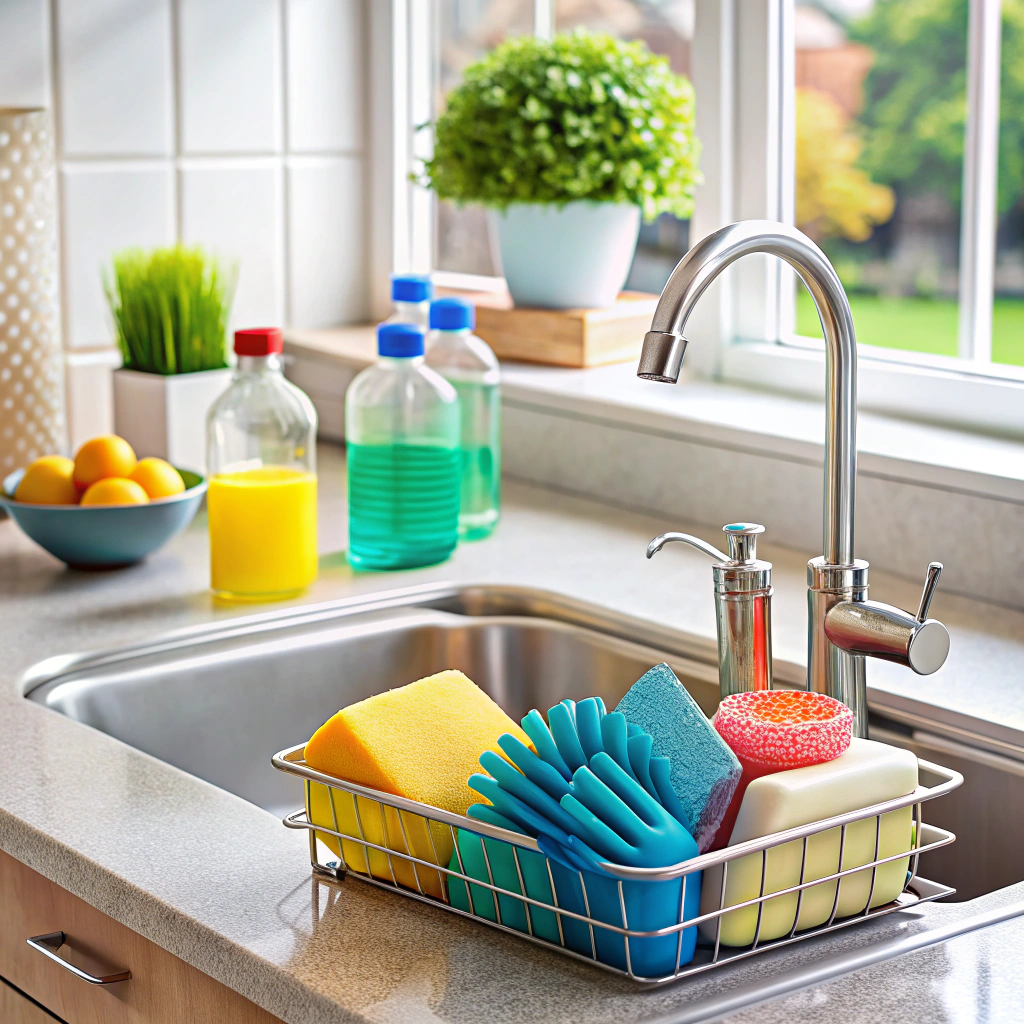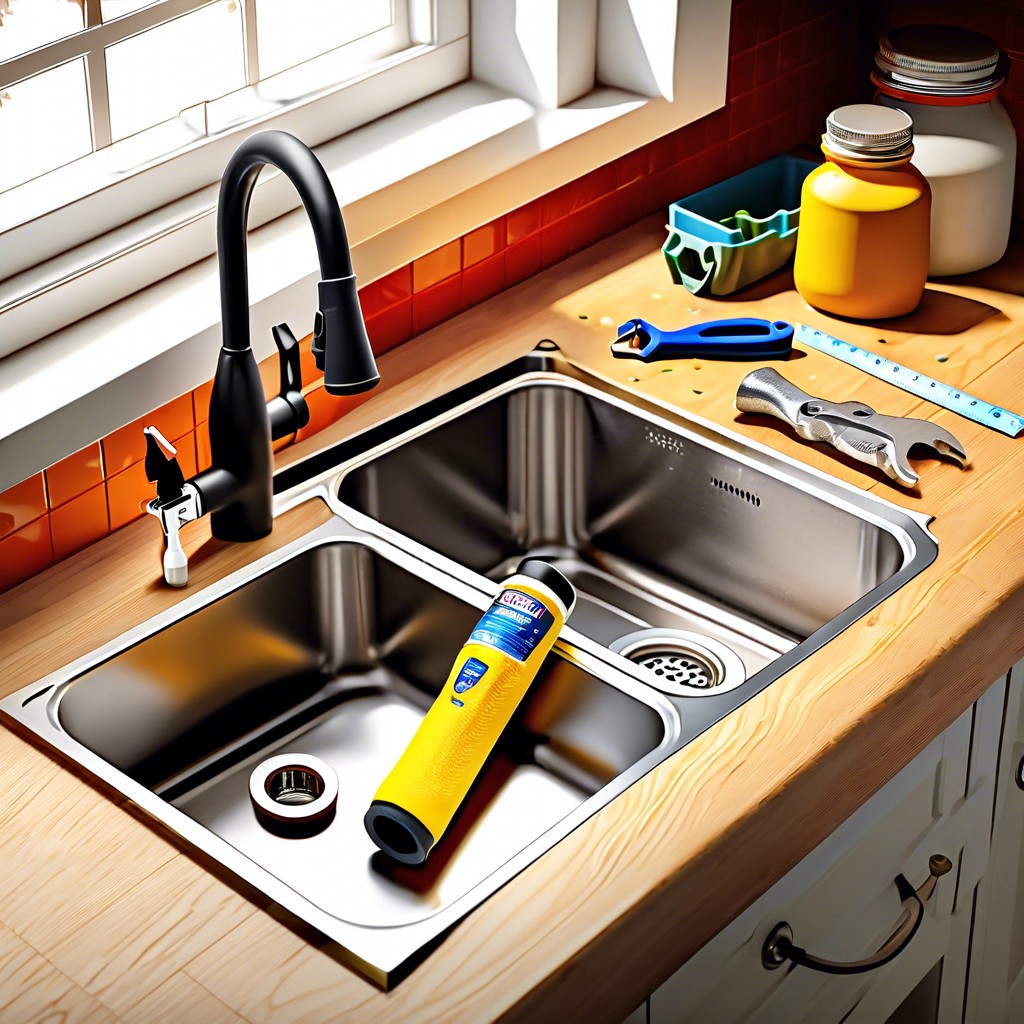Last updated on
Learn how to choose the perfect kitchen sink that suits your style, budget, and needs.
Choosing the right kitchen sink is like picking the perfect pair of jeans—it has to fit just right and match your style! Whether you’re baffled by basins or mulling over materials, this guide will help you navigate through sink types, materials, sizes, and more. Ready to transform your kitchen into a functional masterpiece? Keep reading, and we’ll dive into every detail you need to consider for the sink that’s just your type!
Key takeaways:
- Consider sink types: drop-in, undermount, farmhouse, integrated, corner.
- Explore sink materials: stainless steel, cast iron, granite composite, copper, fireclay.
- Evaluate number of basins: single, double, triple for convenience.
- Review installation methods: drop-in, undermount, apron-front, integrated.
- Select sink size and depth for functionality and comfort.
What's Inside
Sink Types and Styles
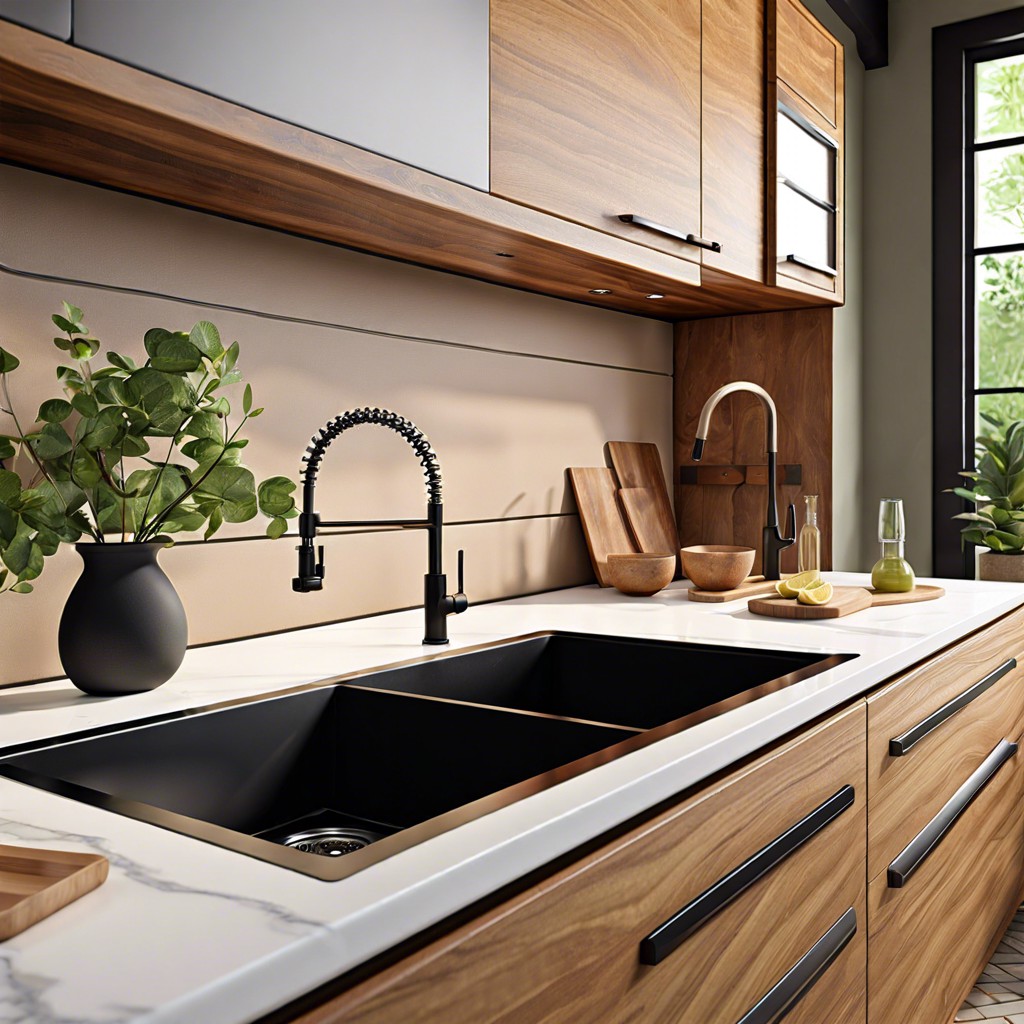
Alright, so let’s talk sink types. There’s an ocean of styles out there. You’ve got your drop-in sinks, which are as straightforward as it gets. A hole in the countertop, drop the sink in, seal it up, and voila! They’re easy to install and replace, making them DIY-friendly.
Now, if you’re aiming for sleek and seamless, consider an undermount sink. It sits below the countertop, giving you that smooth, uninterrupted look. Plus, it makes sweeping crumbs off the counter a breeze—no more gunk stuck under the sink rim.
Farmhouse sinks, or apron-front sinks, bring that rustic charm. They’re deep, spacious, and their exposed front adds character to any kitchen. Perfect for washing large pots—or small dogs, who knows?
Don’t overlook the integrated sink. These are built into the countertop, often made of the same material. Cleaning is a cinch since there’s no edge to catch grime.
Lastly, corner sinks—ideal for small kitchens. They utilize those awkward spaces, giving you more room for other essentials.
Sink Materials
Stainless steel sinks are the rockstars of the kitchen world. They’re durable, easy to clean, and fit in with nearly any kitchen style. Plus, they’re a champ at resisting rust and stains—gotta love that.
Cast iron sinks, coated in porcelain, bring a touch of classic charm. They’re heavy and solid, almost like the Arnold Schwarzenegger of sinks. However, they can chip if you’re not careful with your pots and pans slam dunking in there.
Granite composite sinks are the glam squad. They offer a high-end look, resist scratching, and come in various colors. Just bear in mind, they can be a little pricy compared to their counterparts.
For the bold and beautiful, there are copper sinks. They add rustic elegance and even boast antimicrobial properties. But remember, they can change color over time—think of it as your sink’s way of having a personality crisis.
Finally, there’s the versatile fireclay option. This material offers a sleek, smooth finish and is resistant to scratches and chips. Just like cast iron, it’s quite hefty, so make sure your countertop can handle the weight.
Choosing the right material for your kitchen sink isn’t just about looks—it’s about finding a match for your kitchen style and habits.
Number of Basins
When considering basins, think about how you use your kitchen. If you’re the type who juggles multiple tasks, a double basin might be your match made in heaven. One basin for washing, the other for rinsing or even thawing that dinner-party roast.
Single basins, on the other hand, are perfect for those big pots and pans that won’t fit anywhere else. They give you that spacious feel, making it almost feel like kitchen yoga—stretching without compromise.
Then there’s the triple basin option, an overachiever’s delight. Perfect for those who want to wash veggies on one side, scrub dishes on the other, and still have a place for the garbage disposal.
Pick what suits your lifestyle. After all, it’s your kitchen kingdom; the sink is your throne.
Sink Installation Methods
Drop-in, undermount, apron-front, or integrated—each installation method has its charm and quirks.
Drop-in sinks, aka top-mount, are the go-to option for DIY enthusiasts. They’re easy to install: just drop them into a pre-cut hole, and the rim sits on the countertop. They play nice with almost any material.
Undermount sinks are the sleek, minimalist cousin. Mounted beneath the countertop, they create a seamless look and make cleanup a breeze. Just swipe crumbs directly into the abyss! But beware: they can be fussy with certain countertop materials like laminate.
Apron-front or farmhouse sinks are the ultimate show-offs. Their exposed front adds a classic vibe, but installation is a bit of a project. They often require custom cabinetry or retrofitting, ideal for kitchen remodels.
Integrated sinks are the Cinderella of the bunch. Molded from the same material as the countertop, they offer a flawless look. Perfect for those who dream of an uninterrupted, smooth surface. They’re fancy but can be pricey.
Choose based on your style, countertop compatibility, and willingness to break out the toolbox.
Sink Size and Depth
Size really does matter, at least when it comes to kitchen sinks. Imagine trying to wash a giant turkey pan in a sink that’s barely big enough to fit a cereal bowl. Not fun, right?
First, consider the overall dimensions. Measure your countertop space and remember: width isn’t the only thing to think about. Depth matters too. A deeper basin can hold more dishes, which is great unless you’re prone to getting a sore back from bending over too much.
Think about your dishwashing habits. If you regularly tackle large pots and pans, opt for a wider and deeper sink. For casual cooks who mostly handle plates and glasses, something more modest might suffice.
Don’t forget to check cabinet size. The sink might fit your kitchen dreams but not your kitchen reality. Make sure there’s enough space inside the cabinets for plumbing—and maybe even a little storage.
Balancing size with function will save you from kitchen disasters and make you feel like the sink-centric superhero you truly are.
Faucet Compatibility
Choosing a sink is only half the battle; you’ve got to think about that faucet, too. Imagine picking out a fabulous outfit, only to realize your shoes don’t match. Tragic, right?
First, count those faucet holes. Most sinks come with one to four pre-drilled holes. This determines if you can have just a faucet or if there’s room for extras like a sprayer, soap dispenser, or filtered water tap.
Next, check the faucet’s reach and height. Ensure it’ll comfortably extend over the center of the sink without creating a splash party every time you rinse a dish.
Also, ponder the handle spacing. Those single-handle faucets are sleek and space-saving. But if you lean towards double handles, make sure the sink allows enough room to twist and turn without bumping into walls or back splashes.
Lastly, consider installation type. Deck-mounted faucets sit on the countertop, while wall-mounted options save space and make cleaning easier. Just make sure the sink and plumbing play nice together.
Don’t forget style. If you have a modern sink, a traditional Victorian-style faucet might look like it’s trying too hard. Match the vibe for a seamless look.
Accessories and Add-Ons
When it comes to kitchen sinks, the fun doesn’t stop at just picking the sink itself. Think of it like accessorizing an outfit. You want to make sure your sink is dressed to impress and works efficiently.
Consider installing a sink grid, a handy little accessory that sits at the bottom of your sink. It prevents scratches and keeps your dishes elevated, so water and food bits can flow freely to the drain. It’s like a spa day for your cookware!
Ever heard of a sink colander? It’s a game-changer for washing veggies or draining pasta without reaching for a separate colander. This nifty tool sits right on the sink’s edge, making meal prep a breeze.
How about a built-in cutting board? Some sinks offer customized cutting boards that fit perfectly over the basin. Chop, dice, and slice your foods right over the sink—no more juggling space on your countertop.
A soap dispenser is another smart pick. Mounted right next to your faucet, it keeps your kitchen counter looking sleek and clutter-free. No more chasing soap bottles around!
Lastly, don’t overlook the convenience of a sink caddy. It’s perfect for organizing your sponges, brushes, and other cleaning tools, giving them a designated home and reclaiming counter space.
These accessories and add-ons can turn your sink into a multifunctional hub, making kitchen chores a bit more enjoyable—dare I say, even fun?
Maintenance Requirements
Let’s face it, nobody wants to spend their free time scrubbing sinks. Some materials are low-maintenance superheroes while others demand a bit more TLC.
Stainless steel sinks are the janitors of the sink world – they show water spots but are easy to clean and pretty much indestructible.
Porcelain ceramic? It’s like the high-maintenance friend who looks fabulous but gets grumpy with stains and chips.
On the other hand, composite granite sinks practically clean themselves, resisting scratches and stains like a champ.
If you opt for copper, be prepared for daily polishing rituals to keep that shiny glow.
Regularly check for hidden grime around the edges and corners regardless of the material.
Remember, your sink’s personality will affect your daily routine. Choose one that fits your cleaning zen.
Budget Considerations
Let’s talk money – because we all know, the kitchen “sink” should not mean sinking your budget.
First, set a realistic budget. High-end sinks can cost a small fortune, but affordable options exist too.
Consider long-term value. Stainless steel sinks are wallet-friendly and durable, while granite composite sinks might be pricier but offer unmatched style and toughness.
Installation costs matter. Undermount sinks look sleek but can be a pain to install – and charge you for the privilege.
Think about maintenance expenses. A cheaper sink might need more frequent repairs, which rack up costs over time.
Remember, it’s not just the sink. Faucets, accessories, and plumbing can add to the bill. Plan accordingly to avoid unpleasant surprises.
Balancing quality and price is key. Sinks chiseled from solid gold might turn heads, but they’ll also turn your bank account upside down. Choose wisely.
Aesthetic Preferences
Is your kitchen a sleek modern marvel, or does it scream cozy farmhouse chic? Your sink should harmonize with the overall vibe. Stainless steel screams contemporary cool, while a porcelain apron sink might be whispering rustic charm. Color can be a game-changer too. Matte black, anyone? Or maybe a classic white that pairs well with any backdrop.
Consider the finish. Polished sinks reflect light and look immaculate, but they can show scratches more easily. Brushed finishes hide minor blemishes and have a subtler shine.
Think about the shape. Curved edges look softer and more traditional, while sharp angles offer a more geometric, modern appeal.
Your kitchen sink is not just a functional workhorse; it’s a statement piece. Choose wisely!
